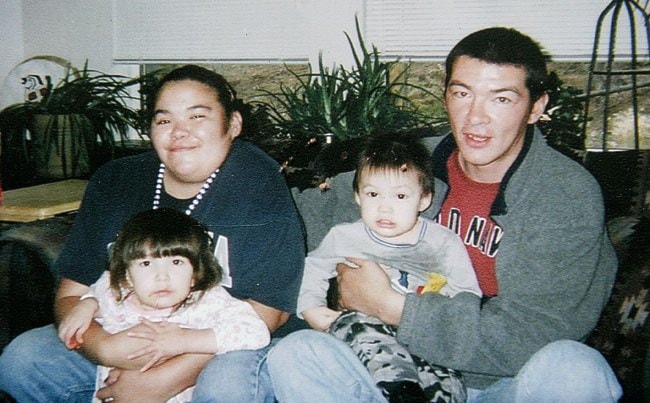Robert Stone’s family deem the inquest into the 34-year-old’s death a failure.
“The whole process is a failure of the coroner system to the marginalized and vulnerable people of Yukon society,” Stone’s uncle, Peter, wrote in a letter to the family’s lawyer after the inquest adjourned on September 22.
At the end of the week-long inquest, a jury of four women and two men decided Stone died of natural, undetermined causes and gave five recommendations to help prevent a death like this from ever happening again.
“But why would you like to prevent a natural death?” asked Susan Roothman, who represented the Stone family in court. “The recommendations have no teeth because it’s not based on the right finding.
“What’s wrong with a finding of unnatural, accidental death?”
Stone suffered seizures – which is 10 times more common for people living with FASD, as Stone did.
To curb the seizures, Stone was prescribed an anti-epileptic drug called Dilantin.
Throughout the case, the drug was a major concern, said Roothman.
“I don’t agree at all with just prescribing Dilantin without making the proper clinical diagnosis underlying that,” she said. “Dilantin is something you give for people with epilepsy. He was never diagnosed with epilepsy.
“There’s also quite a lot of medical literature out there saying that you shouldn’t give (Dilantin) to people who are addicted to alcohol. Just because of the fact that the interaction between Dilantin and alcohol is not good. The effects on the liver is extreme.
“I don’t know how they could have had him on Dilantin all the time.”
During his last, six-week stay at the Whitehorse Correction Centre, Stone had bloodwork done each week to monitor the Dilantin in his system.
“His Dilantin levels were completely out of range,” said Roothman. “It was way too high. And what I picked up in the literature is when you have high Dilantin levels, out of range, you could get a seizure because of Dilantin withdrawal.
“There are other medications, but they are a lot more expensive.
“Stone fell through the cracks, totally.”
Throughout the case, Roothman also consulted with an Outside pathologist who believed Stone died of positional asphyxia, which would have been considered an accidental death.
Roothman and her pathologist believe Stone had a seizure, which made him unable to turn his head away from the pillow he was sleeping on.
She attempted to defend this theory in court by discussing the appearance of “blanching” on Stone’s face.
When someone dies, blood stops flowing around the body. Instead, it congeals and leaves a reddish colouring against the skin where it settles. For example, if a person dies lying on their back and is left long enough, the underside of the body will go red – except for areas where the skin is pressed against something, like the ground. For a body on its back, this “blanching” will commonly occur under the shoulder blades, the back of the head and the buttocks.
Stone died lying on his stomach. When he was found at 10:40 a.m. on May 2, 2010, he was turned over. This caused the blood to settle and congeal on both the front and back of his body, allowing a pretty accurate time of death, pegged at 8:30 a.m. And, days later, while the body lay on the autopsy table in Vancouver, there were still signs of blanching on Stone’s face, especially around the nose and mouth.
This suggests asphyxiation, Roothman told the court.
But it wasn’t enough proof, said Dr. Charles Lee, the pathologist who conducted the autopsy and reported the cause of death as “undetermined.”
“In my opinion, when you get a finding by a pathologist of undetermined causes, I think there’s obligation on the coroner to get a second opinion,” said Roothman on Thursday.
But the pathologist Roothman was working with couldn’t be called to the stand because the family could not afford expert fees.
“The coroner is working for the Yukon public, isn’t she?” asked Roothman. “As long as we have findings that are questionable by the pathologist, how are we really looking at how we’re going to change things so things like this won’t happen in the future? Especially when the family is not able to secure experts to bring some light.
“It’s unfortunate.”
Not all questions can be answered in every death, said Yukon coroner Sharon Hanley.
“We felt that the relevant medical information was presented,” she added. “The testimony of Dr. Lee, he suggested several things that could have been the cause of death, but if you can’t find them anatomically by examining the body – he can’t pick one over the other.
“We tried to answer all the questions based on the evidence we gave.”
Citing a recent verdict from the Northwest Territories, even including the important facts around the circumstance of the death could help give the jury’s recommendations more depth, said Roothman.
We need to change the whole way deaths are investigated, said Roothman, who also represented Raymond Silverfox’s family in that coroner’s inquest.
“It’s over to the legislators to do that. I think there’s a clear obligation of the coroner to do quality control of the pathologist’s work.
“And I think maybe it’s time for judges to preside over inquests of coroners.”
Roothman has received no instruction at this stage to file for a judicial review of the inquest, as she did with the Silverfox case, she said.
Contact Roxanne Stasyszyn at roxannes@yukon-news.com
